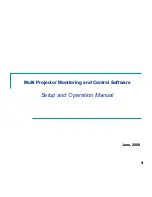
Creating tandem private networks
525
Programming Operations Guide
In this type of network, you must ensure that each Business Communications Manager system,
known as a node of the network, is set up to route calls internally as well as to other nodes on the
system. This means, each node must have a route to the immediately-adjacent node, and the
correct codes to distribute the called numbers. Each node must have a unique identification
number, which is determined by the type of dialing plan chosen for the network.
As well, you can save costs by having a public network connection to only one or two nodes, and
routing external calls from other nodes out through the local PSTN, thus avoiding toll charges for
single calls.
This section includes the following:
•
“Calls originating from the public network” on page 525
•
“Calls originating in the private network” on page 528
•
“Routing for tandem networks” on page 530
VoIP note:
You can also use VoIP trunks between some or all of the nodes. The setup is the same,
except that you need to create gateway records for each end of the trunk, and routing tables to
accommodate the gateway codes. Refer to the
IP Telephony Configuration Guide
for information
about setting up VoIP trunks and gateway programming.
Calls originating from the public network
The following table describes who each node handles calls originated from the public network into
the system.
Table 115
Call originating from the public network to a tandem network
Received
Destination
Description
Node A
Node A
User in Calgary dials 761-xxxx number
Incoming interface: Public
DN type: Public
Node A receives the call and identifies it as terminating locally. Uses target line to route
call (Public received #).
Destination: Local (target line)
Node A
Node B
User in Calgary dials a 762-xxxx number
DN type: Public
Node A receives it and identifies it as being for node B. Uses private trunk to route it to B.
Incoming interface: Public
Destination: Remote Node
Outgoing interface: Private
Node B receives the call and identifies it as terminating locally. Uses target line to route
call (Private received #).
Incoming interface: Private
Destination: Local (target line)
Summary of Contents for BCM 3.7
Page 4: ...4 Software licensing N0008589 3 3...
Page 32: ...32 Contents N0008589 3 3 W 937 Index 939...
Page 46: ...46 Tables N0008589 3 3...
Page 64: ...64 How to get help N0008589 3 3...
Page 90: ...90 Manually activating Telnet N0008589 3 3...
Page 116: ...116 Delayed system restart N0008589 3 3...
Page 194: ...194 Configuring a data module N0008589 3 3...
Page 276: ...276 Setting line telco features N0008589 3 3...
Page 310: ...310 Using COS passwords N0008589 3 3...
Page 364: ...364 Enhanced 911 E911 configuration N0008589 3 3...
Page 380: ...380 Renumbering DNs N0008589 3 3...
Page 398: ...398 Saving wizard pages on your computer N0008589 3 3...
Page 458: ...458 Voice Mail settings N0008589 3 3...
Page 488: ...488 Setting system telco features N0008589 3 3...
Page 508: ...508 Other programming that affects public networking N0008589 3 3...
Page 522: ...522 PRI networking using Call by Call services N0008589 3 3...
Page 592: ...592 Monitoring Hunt groups N0008589 3 3...
Page 636: ...636 Configuring Double Density N0008589 3 3...
Page 640: ...640 Using the Network Update Wizard N0008589 3 3...
Page 666: ...666 Importing and Exporting DHCP data N0008589 3 3...
Page 722: ...722 Restarting the router N0008589 3 3...
Page 726: ...726 Important Web Cache considerations N0008589 3 3...
Page 748: ...748 Configuring an Interface with NAT N0008589 3 3...
Page 794: ...794 IPSec N0008589 3 3...
Page 818: ...818 Configuring the Policy Agent characteristics N0008589 3 3...
Page 832: ...832 Firewall rules for Business Communications Manager with Dialup interfaces N0008589 3 3...
Page 876: ...876 ISDN Programming N0008589 3 3...
Page 1004: ...1004 Index N0008589 3 3...
















































